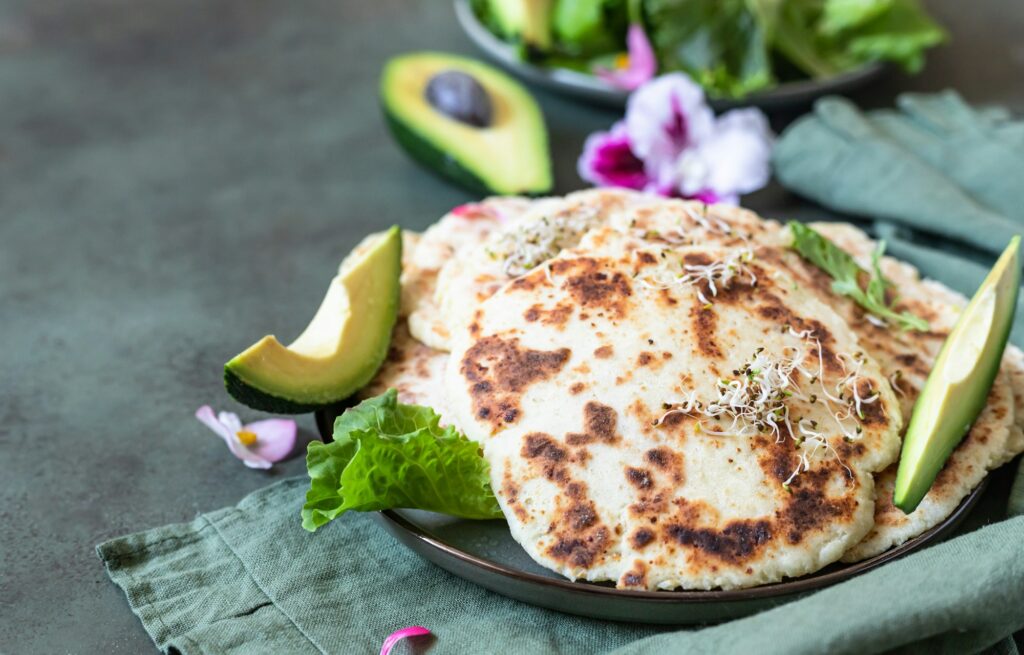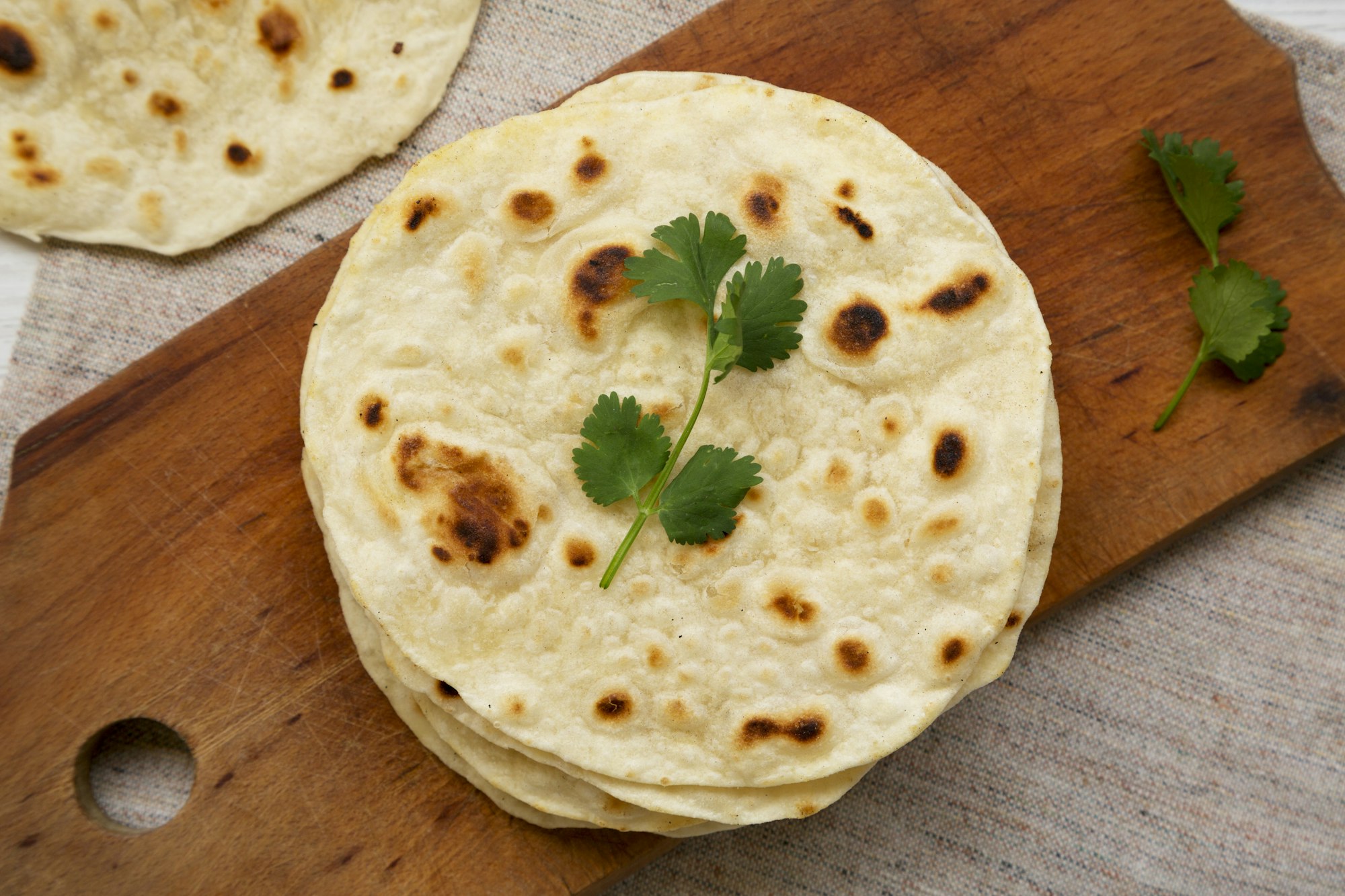The pictures in our articles might not always show exactly what the text is talking about. We use these images to make the article more interesting and eye-catching. They are there to add to the text, but not to replace it or show every detail.
Chapati, also known as roti or Indian flatbread, is a staple in many households across the Indian subcontinent and beyond. This simple yet versatile bread has been nourishing people for centuries, but have you ever wondered about its nutritional value? In this comprehensive guide, we'll explore the fascinating world of chapati nutrition facts and uncover 11 surprising health benefits that make this humble flatbread a nutritional powerhouse.
What is Chapati?
Before we dive into the nutrition facts, let's quickly understand what chapati is. Chapati is an unleavened flatbread made from whole wheat flour (atta), water, and sometimes a pinch of salt. It's cooked on a flat skillet called a tava and is a common staple in India, Nepal, Bangladesh, Pakistan, Sri Lanka, and many other countries.
Now, let's explore the nutritional benefits that make chapati a healthy addition to your diet.
11 Surprising Chapati Nutrition Facts

1. Fiber-Rich for Digestive Health
Chapati is an excellent source of dietary fiber, providing approximately 2.7 grams per serving. This high fiber content offers numerous benefits:
- Promotes regular bowel movements
- Prevents constipation
- Supports the growth of beneficial gut bacteria
- Aids in maintaining a healthy digestive system
By incorporating chapati into your meals, you're giving your digestive health a significant boost.
2. Protein Powerhouse
Contrary to popular belief, chapati is a good source of protein, especially for vegetarians and vegans. The whole wheat flour used in chapati contains a decent amount of protein, which is essential for:
- Muscle growth and repair
- Enzyme and hormone production
- Maintaining healthy skin, hair, and nails
Including chapati in your diet can contribute to your overall protein intake, supporting various bodily functions.
3. Low in Calories, High in Nutrition
For those watching their calorie intake, chapati is an excellent choice. A typical chapati contains only about 70-80 calories, making it a relatively low-calorie option compared to other bread varieties. This means you can enjoy the nutritional benefits of chapati without worrying about excessive calorie consumption.
4. B Vitamin Bonanza
Chapati is rich in essential B vitamins, including:
- Thiamine (B1)
- Riboflavin (B2)
- Niacin (B3)
- Folate (B9)
These vitamins play crucial roles in:
- Energy production
- Maintaining healthy red blood cells
- Supporting brain function
- Promoting overall cellular health
By consuming chapati regularly, you're giving your body a natural B vitamin boost.
5. Mineral-Rich Marvel
Chapati is packed with essential minerals that are vital for various bodily functions:
- Iron: Supports red blood cell production and oxygen transport
- Magnesium: Important for bone health and muscle function
- Phosphorus: Aids in bone and teeth formation
- Potassium: Helps maintain proper electrolyte balance and heart function
These minerals work together to keep your body functioning optimally.
6. Heart-Healthy Choice
The high fiber content in chapati can have a positive impact on your cardiovascular health. Here's how:
- Helps reduce cholesterol levels
- Lowers the risk of heart disease
- Promotes better blood circulation
By choosing chapati over refined flour breads, you're making a heart-smart decision.
7. Diabetic-Friendly Option
For individuals managing diabetes or those concerned about blood sugar levels, chapati is a suitable choice. It has a lower glycemic index compared to white bread, which means it causes a slower rise in blood sugar levels. This property makes chapati an excellent option for:
- Better blood sugar control
- Reduced risk of sudden spikes in glucose levels
- Sustaining energy levels throughout the day
8. Gluten-Free Alternatives Available
While traditional chapati contains gluten, there are gluten-free alternatives available for those with celiac disease or gluten sensitivity. These alternatives are made from flours such as:
- Millet
- Buckwheat
- Sorghum
These gluten-free options offer similar nutritional benefits, making chapati accessible to a wider range of people with different dietary needs.
9. Versatile and Easy to Prepare
One of the great things about chapati is its versatility and ease of preparation. You can enjoy it with various dishes, from curries to wraps or sandwiches. The simple ingredients and cooking method make it a convenient addition to your meals, allowing you to reap its nutritional benefits without spending hours in the kitchen.
10. Sustained Energy Release
Thanks to its combination of complex carbohydrates and fiber, chapati provides a steady release of energy. This means:
- You feel full and satisfied for longer periods
- Avoid sudden energy crashes
- Maintain stable blood sugar levels
This sustained energy release makes chapati an excellent choice for breakfast or as a pre-workout meal.
11. Weight Management Aid
If you're looking to manage your weight, chapati can be a valuable ally. Its high fiber content and low-calorie nature contribute to:
- Increased feelings of fullness
- Reduced overall calorie intake
- Better portion control
By incorporating chapati into a balanced diet, you can support your weight management goals while still enjoying delicious and satisfying meals.
How to Incorporate Chapati into Your Diet
Now that you're aware of the impressive nutritional profile of chapati, you might be wondering how to include it in your diet. Here are some simple ideas:
- Use chapati as a wrap for vegetables and lean proteins
- Serve it alongside curries or stews
- Enjoy it with a side of yogurt and fresh fruits for breakfast
- Use it as a base for homemade pizzas
- Crumble it over salads for added texture and nutrition
Remember, while chapati is nutritious, it's essential to consume it as part of a balanced diet. Pair it with a variety of vegetables, lean proteins, and healthy fats for optimal nutrition.
Certainly! I'll add a FAQ section to the blog post about Chapati Nutrition Facts. This section will address common questions readers might have after learning about the nutritional benefits of chapati.
Frequently Asked Questions About Chapati Nutrition
Conclusion
Chapati is more than just a traditional flatbread – it's a nutritional powerhouse that offers numerous health benefits. From supporting digestive health and providing essential nutrients to aiding in weight management and blood sugar control, chapati has earned its place as a staple food in many cultures.
By understanding these chapati nutrition facts, you can make informed decisions about including this versatile bread in your diet. Whether you're looking to boost your fiber intake, manage your weight, or simply enjoy a delicious and nutritious meal, chapati is an excellent choice that combines tradition with modern nutritional wisdom.
So, the next time you bite into a warm, freshly made chapati, remember that you're not just satisfying your taste buds – you're nourishing your body with a wealth of essential nutrients. Embrace the goodness of chapati and let it become a healthy, delicious part of your balanced diet.






